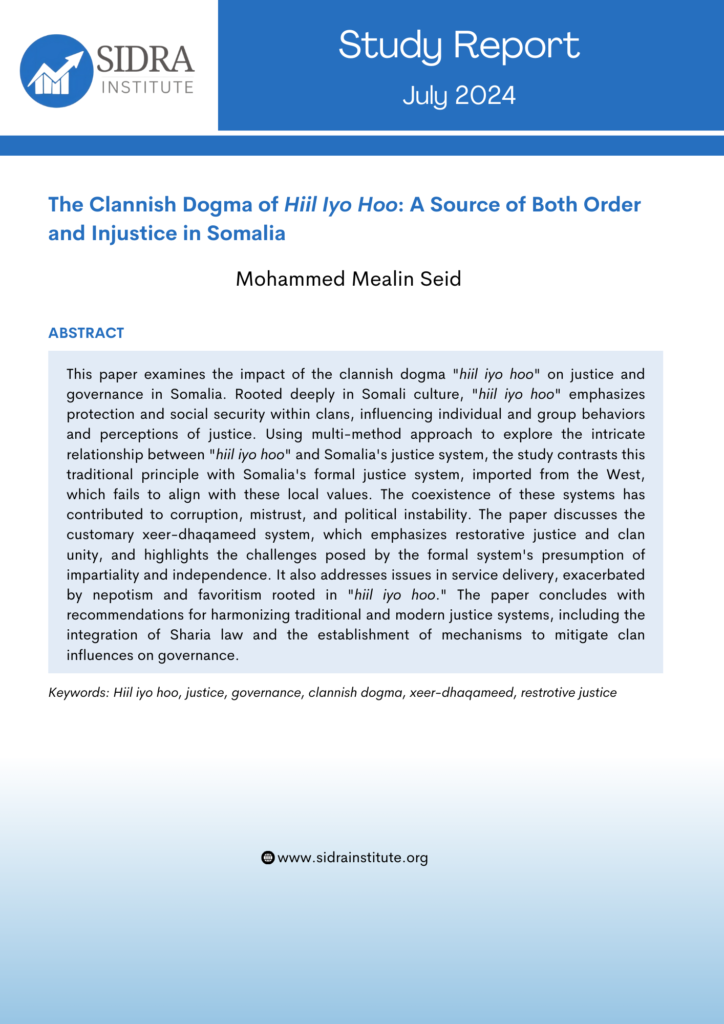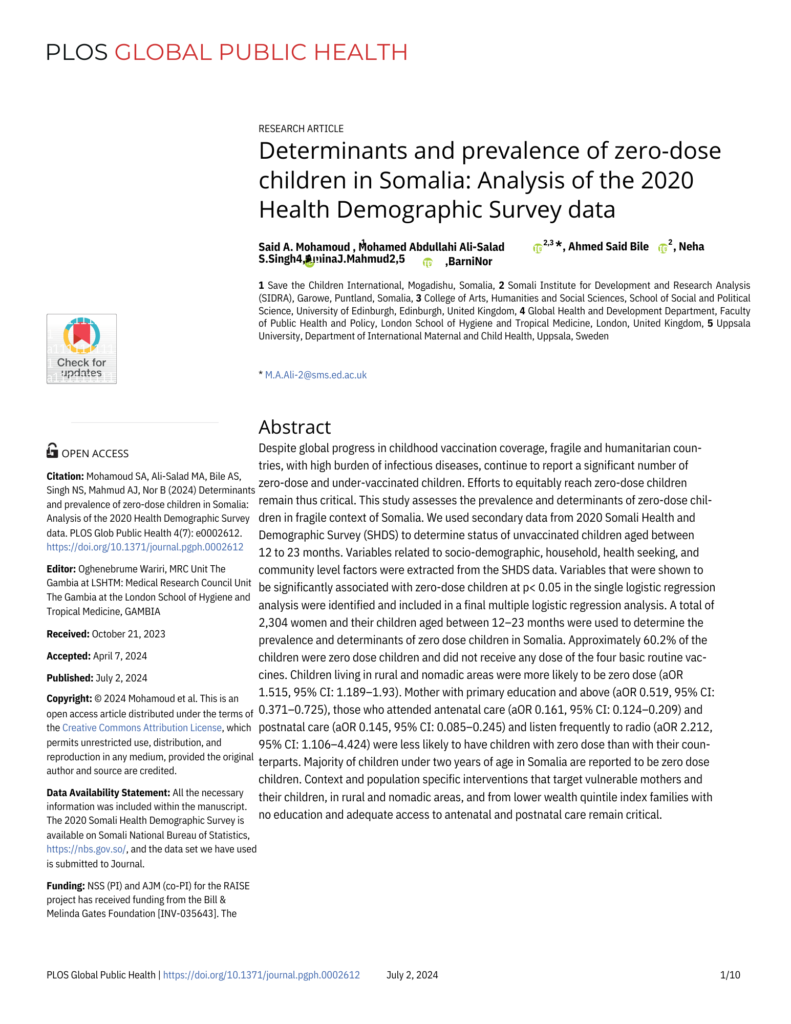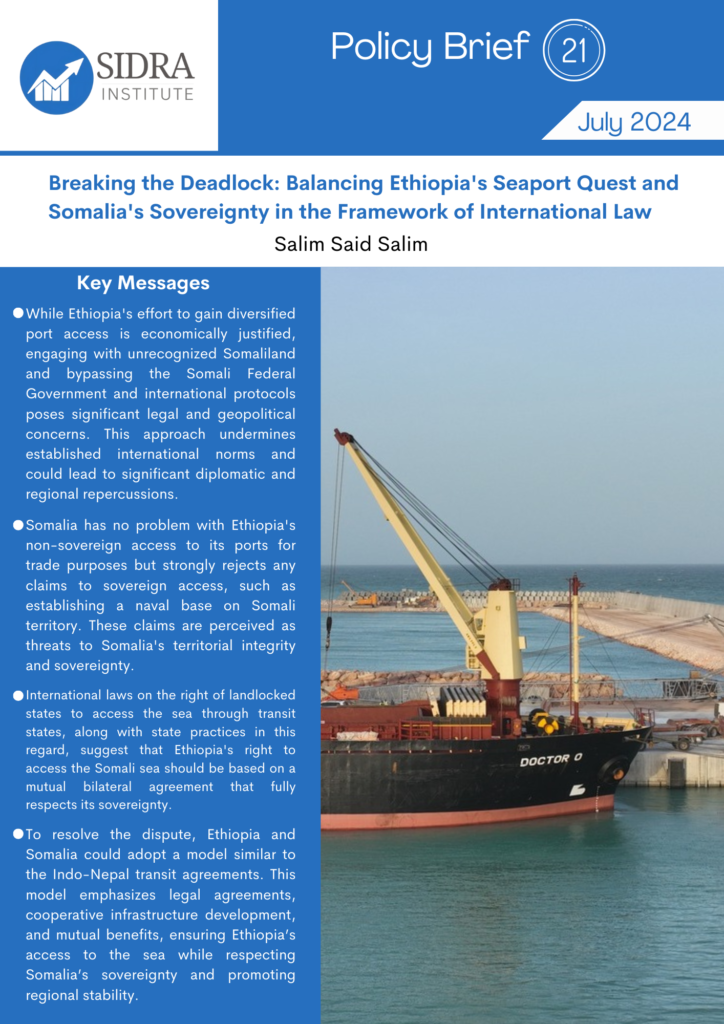Ethiopia, being landlocked, considers reliable and cost-effective seaport access crucial for its economic development. Studies reveal that landlocked countries tend to be 20% less developed than they would be if they had access to the sea, partly due to higher transportation costs ranging from 50 to 260% more than coastal countries. To achieve its development objectives, Ethiopia requires “export-oriented” industrialization and increased agricultural productivity (The Ethiopian Herald, 2024). Historically, Ethiopia has relied on neighboring countries for sea access, especially since Eritrea’s secession in 1993, which cut off its primary maritime outlet. Ethiopia has since secured bilateral agreements, notably with Djibouti through the Djibouti Port Utilization Agreement. This agreement grants Ethiopia permanent rights to access the sea, use port facilities, and transit goods through Djibouti’s territory. Key provisions include exemptions from customs duties and the right for Ethiopian enterprises to operate in Djibouti’s duty-free zone. Disputes under this agreement can be settled through arbitration (Shchukina, 2024). This agreement exemplifies a successful bilateral approach that respects international norms and mutual sovereignty. In addition to the Djibouti port, Ethiopian access options include Kenya’s Moyale dry port and Somal’s Berbera port, though these routes currently lack the necessary infrastructure to support bulk shipments. Ethiopia’s need for cost-effective port access has led to aggressive diversification initiatives, resulting in an increasing number of sea and dry ports utilized by the country (The Ethiopian Herald, 2024). These efforts highlight Ethiopia’s strategic goal to mitigate dependency on a single-entry point and enhance logistical resilience. As part of Ethiopia’s efforts to expand its access to ports, it signed a port pact with Somalia in June 2018 and announced plans to jointly develop four Somali ports as part of a wider bilateral agreement to enhance political and economic cooperation. This agreement reflected Ethiopia’s regional push to warm relations with its neighbors, diversify port access, and secure its economic future (Oxford Analytica, 2018). However, Ethiopia’s recent agreement with Somaliland represents a significant shift from its previous diplomatic and strategic approaches. On January 1, 2024, Ethiopia signed a Memorandum of Understanding (MoU) with the self-proclaimed Republic of Somaliland. The full text of the agreement remains undisclosed to public, Somaliland announced an agreement to lease land to Ethiopia for 50 years for the construction of a naval facility along its coast, in exchange for Ethiopia’s recognition of Somaliland’s statehood. Yet, ambiguity persists regarding the agreement’s specifics, including the extent of the leased area and supplementary provisions. Initially, Ethiopian authorities hinted at a multifaceted purpose for the proposed facility, encompassing both military and commercial functions. Conversely, Somaliland asserted that Ethiopia’s intent revolves solely around establishing a naval base, with Berbera port retained for trade operations. Regarding the area, the initial announcement indicated a 20-kilometre stretch of coastline for lease. But later, a prominent Ethiopian figure stated the deal’s coverage spans 20 square kilometres of both land and sea (Šturdík, S. (2024). While Ethiopia’s pursuit of diversified port access is driven by legitimate economic and strategic interests, the method of bypassing recognized international protocols and engaging with an unrecognized entity like Somaliland raises critical legal and geopolitical issues. The move could lead to significant diplomatic and regional repercussions, challenging the established norms of international law and state sovereignty. Consequently, this move has been widely criticized by the international community, with countries and organizations like China, the United States, the African Union, and the European Union expressing support for Somalia’s territorial integrity. Somalia, which considers Somaliland part of its territory, condemned the agreement as an act of aggression and referred the dispute to the UN Security Council (Shchukina, 2024). With Turkey mediating talks between Somalia and Ethiopia regarding the Memorandum of Understanding (MoU), both parties have expressed a willingness to engage in continued dialogue, despite not yet reaching an agreement. This policy brief paper aims to explore the motivations, legal implications, and geopolitical ramifications of Ethiopia’s efforts to secure diversified seaport access through Somaliland. It provides a comprehensive analysis of the Ethiopian-Somaliland Agreement, examining its impact on regional stability, international law, and Somalia’s sovereignty concerns. Additionally, the paper proposes viable conflict resolution models to facilitate a mutually beneficial solution for Somalia and Ethiopia.



